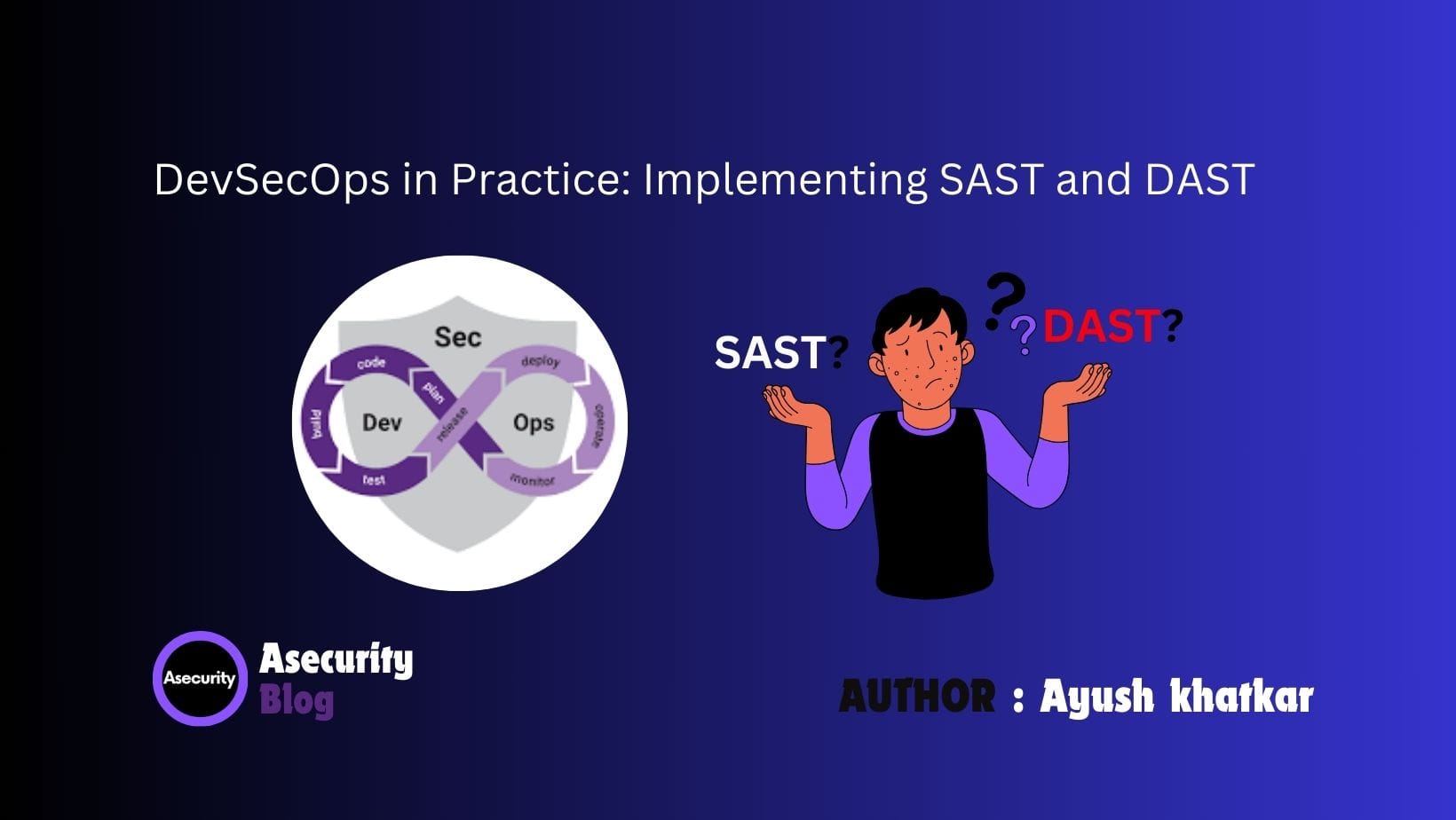DevSecOps in Practice: Implementing SAST and DAST

In our previous blog, we introduced the concept of DevSecOps and its importance in building secure software. Now, let's dive deeper into two essential tools for implementing DevSecOps: Static Application Security Testing (SAST) and Dynamic Application Security Testing (DAST).
Understanding SAST and DAST
- SAST (Static Application Security Testing): This method analyzes your application's source code or compiled code without actually executing it. It identifies potential vulnerabilities like SQL injection, buffer overflows, and cross-site scripting (XSS).
- DAST (Dynamic Application Security Testing): In contrast, DAST tests your application while it's running. It simulates real-world attacks to uncover vulnerabilities like insecure authentication, injection flaws, and broken access control.
How SAST and DAST Work Together
While SAST and DAST are different, they complement each other effectively.
- SAST is ideal for early detection of vulnerabilities during the development phase, helping developers fix issues before they become a problem.
- DAST is valuable for finding vulnerabilities that might be missed by SAST, especially those related to runtime behavior and interactions with external systems.
By combining SAST and DAST, you create a robust security testing strategy.
Implementing SAST and DAST
Here's a simplified approach to integrating SAST and DAST into your DevSecOps pipeline:
- Choose the Right Tools: Select SAST and DAST tools that align with your development environment and security requirements.
- Integrate into CI/CD: Incorporate SAST and DAST scans into your continuous integration and continuous delivery pipeline.
- Prioritize Findings: Not all vulnerabilities are created equal. Focus on high-risk issues first.
- Remediate and Retest: Fix identified vulnerabilities promptly and retest to ensure the issue is resolved.
- Continuous Improvement: Regularly review your security testing process and tools to stay up-to-date with the latest threats.
Example: Building a Secure E-commerce Application
Let's revisit our e-commerce website example.
- SAST: Analyze the source code for vulnerabilities like insecure password storage, SQL injection, and cross-site scripting.
- DAST: Test the live website for vulnerabilities like insecure authentication, injection flaws, and broken access control.
By combining SAST and DAST, you can identify and address security risks throughout the development lifecycle.
Conclusion
SAST and DAST are powerful tools for improving your application security. By integrating them into your Devsecops pipeline, you can build more secure software and protect your organization from cyber threats. Remember, security is a process, not a final end . Continuously evaluate your security practices and adapt as needed.
In our next blog, we'll explore other essential Devsecops practices, such as infrastructure as code (IaC) security and security awareness training.
Happy Secure Software,
Author: Ayush khatkar is a cybersecurity researcher, technical writer and an enthusiastic pen-tester at Asecurity. Contact here.

